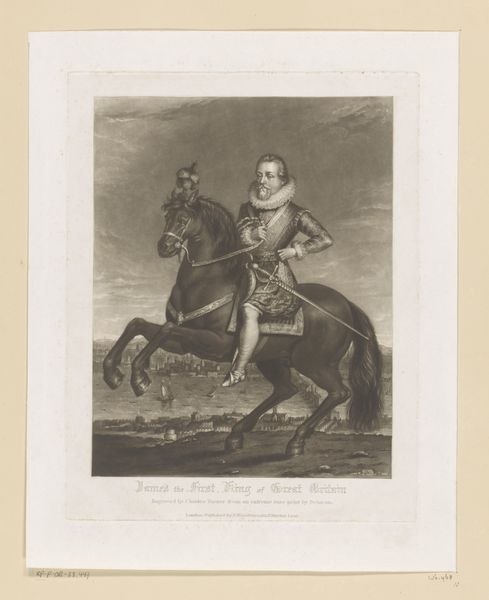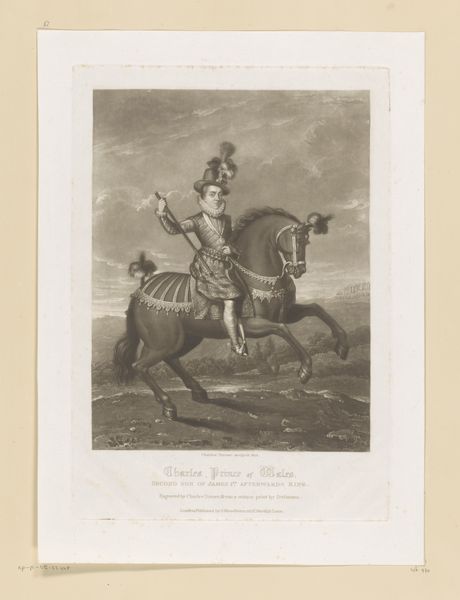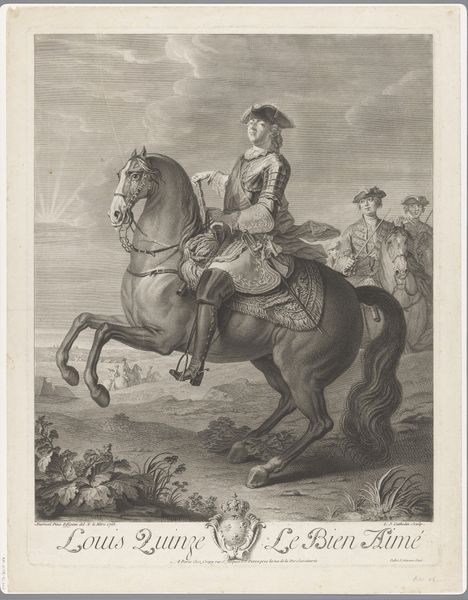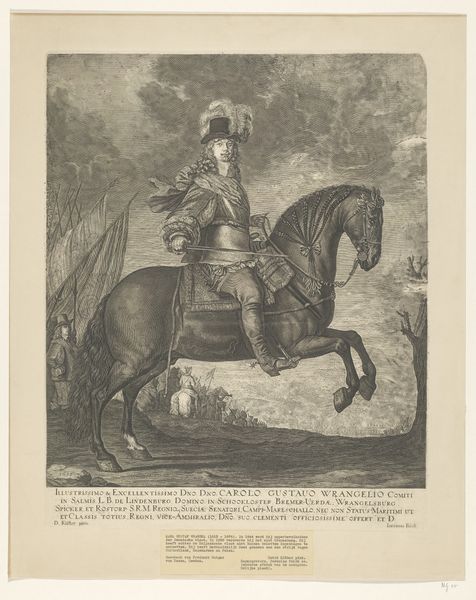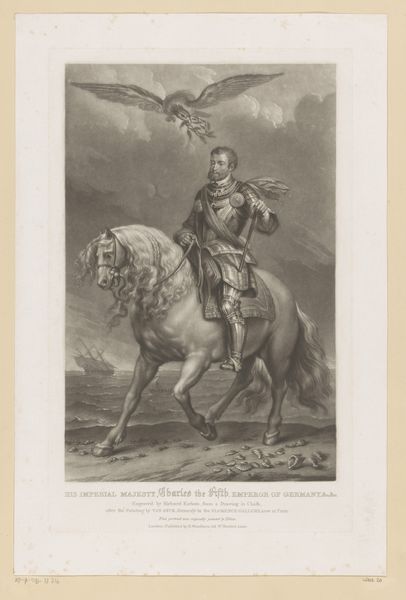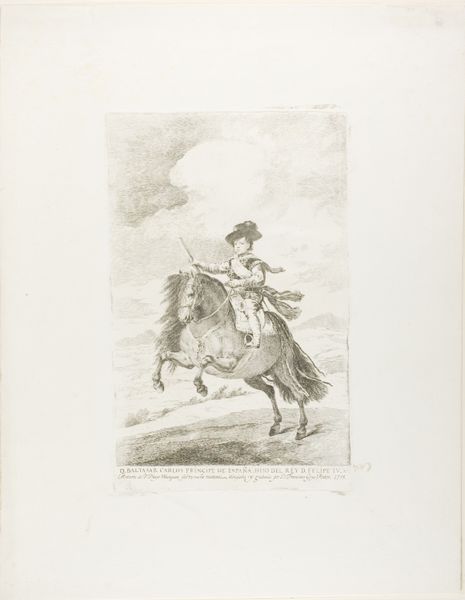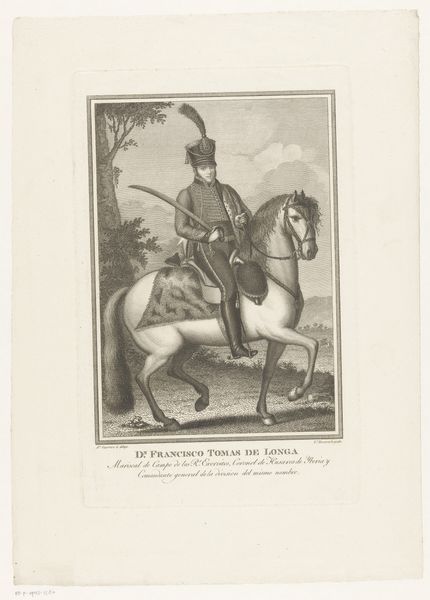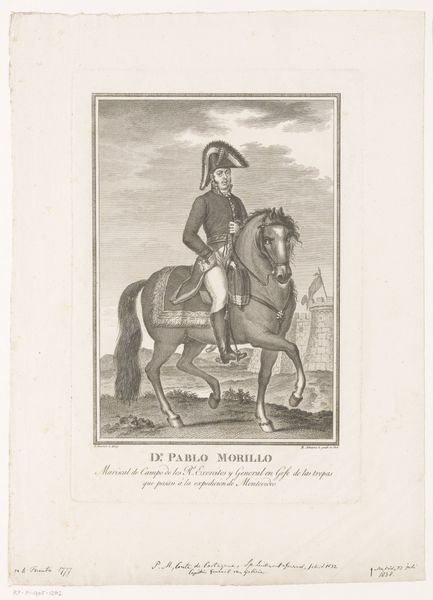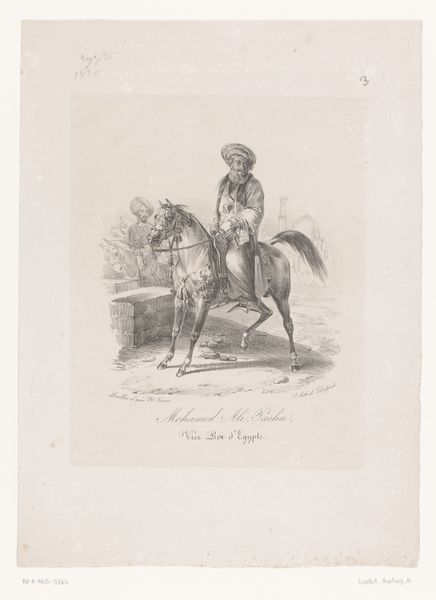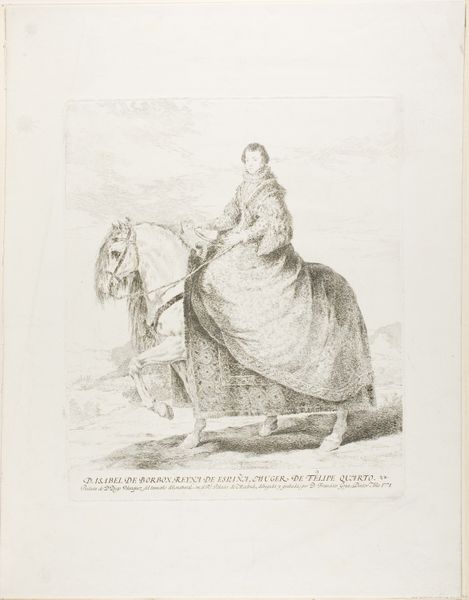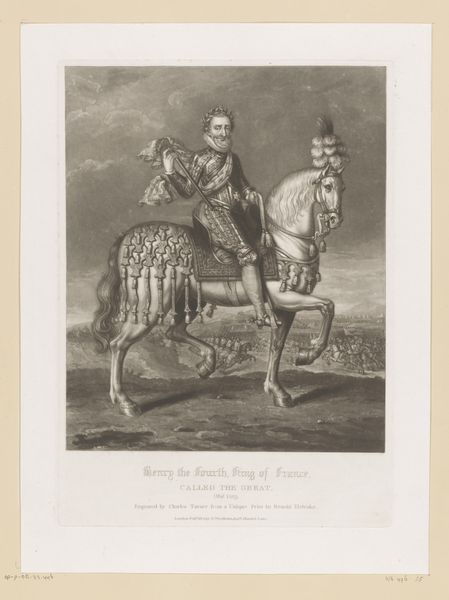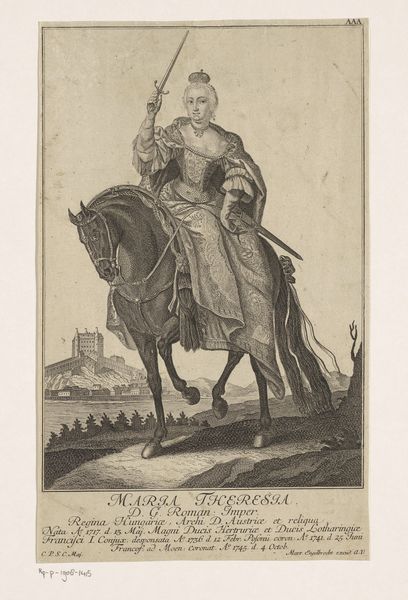
Dimensions: height 391 mm, width 265 mm
Copyright: Rijks Museum: Open Domain
Editor: Here we have Charles Turner's "Portret van Frederik V van de Palts," made as an engraving in 1813. It's a pretty commanding image with Frederick V on horseback leading his troops into battle. What story do you think this portrait is trying to tell? Curator: The portrait itself, though made in 1813, is firmly rooted in the visual language of the Baroque era. The rearing horse, the armour, the distant battle – these are all conventions used to portray power and authority. But, consider its context: Turner is working almost two centuries after Frederick's death. Why revive this imagery? Editor: Maybe to evoke a sense of past glory? Or even to remind people of historical claims to power? Curator: Precisely! Think about the period in which Turner was working. This is during the Napoleonic Wars. Across Europe, national identities were being forged and challenged. Visual imagery was key. Portraits like this offered a very particular kind of historical narrative. Who do you think would commission or buy such a print? Editor: Possibly someone looking back to a time of perceived strength and leadership. Someone perhaps invested in associating themselves with that historical legacy? Curator: Exactly. This portrait isn't just about Frederick V; it is very much a statement about early 19th-century European society and the political uses of history. How do the print’s relatively accessible techniques play into this public role? Editor: The prints, made by engraving, were reproducible, less costly, thereby making them widely accessible? Curator: Absolutely, thus playing into constructing the cultural understanding of power and lineage for the masses. This wasn't simply an artwork; it was a piece of political communication, made widely available. Editor: It’s amazing how an image can operate on so many levels. Now I see how this 1813 portrait reveals so much about the politics of image making, and its use as political propaganda at the time. Curator: Precisely. The layers of history within the image itself become incredibly revealing.
Comments
No comments
Be the first to comment and join the conversation on the ultimate creative platform.
